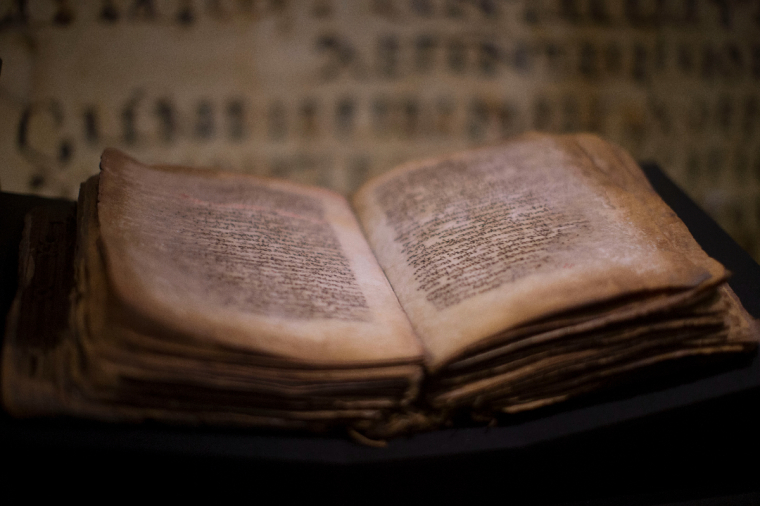

A scientist claims to have found a hidden historical translation containing parts of the Gospel of Matthew that are stated to be the one recognized “remnant of the fourth manuscript that attests to the Outdated Syriac model” of the Gospels.
The researchers, together with medievalist Grigory Kessel of the Austrian Academy of Sciences (OeAW or Österreichische Akademie der Wissenschaften), used ultraviolet pictures to search out the traditional translation hidden beneath three layers of textual content.
The research, revealed final month within the journal New Testomony Research, options an interpretation of Mattew 11:30 to Matthew 12:26, initially translated as a part of the Outdated Syriac translations almost 1,500 years in the past.
Based on the British Library, Syriac was a dialect of Japanese Aramaic utilized by the Church in Syria and several other international locations within the Center East from the primary century till the Center Ages. Though it was written in the identical alphabet as Hebrew, the Syriac language has its personal distinctive characters.
“So far as the relationship of the Gospel guide is anxious, there could be little doubt that it was produced no later than the sixth century,” the research reads. “Regardless of a restricted variety of dated manuscripts from this era, comparability with dated Syriac manuscripts permits us to slender down a doable timeframe to the primary half of the sixth century.”
Based on an announcement launched by OeAW earlier this month, the found textual content was made within the third century and copied within the sixth century. Greater than 1,000 years in the past, a scribe in historical Israel erased a guide of the Gospel inscribed with Syriac textual content to reuse it, because the parchment was a scarce useful resource within the desert within the Center Ages and was typically reused.
“The custom of Syriac Christianity is aware of a number of translations of the Outdated and New Testaments,” Kessel acknowledged. “Till not too long ago, solely two manuscripts had been recognized to comprise the Outdated Syriac translation of the gospels.”
A type of fragments is saved on the British Library in London. The second fragment was found as a “palimpsest,” or reused manuscript that also bears traces of its unique kind, in St. Catherine’s Monastery at Mount Sinai.
The fragment recognized by Kessel presents a “distinctive gateway” to an early section of the “textual transmission” of the Gospels.
“For instance, whereas the unique Greek of Matthew chapter 12, verse 1 says: ‘At the moment Jesus went by means of the grainfields on the Sabbath; and his disciples turned hungry and started to choose the heads of grain and eat,’ the Syriac translation says: ‘[…] started to choose the heads of grain, rub them of their fingers, and eat them,” the assertion famous.
Claudia Rapp, the director of the Institute for Medieval Analysis on the OeAW, praised Kessel for the invention, crediting the researcher for his “profound information” of previous Syriac texts and script traits.
Rapp estimated that the Syriac translation was produced not less than a century earlier than a few of the oldest surviving Greek manuscripts, together with the Codex Sinaiticus. The Codex Sinaiticus is an entire textual content of the Gospels believed to be older than the fourth century.
“This discovery proves how productive and necessary the interaction between fashionable digital applied sciences and fundamental analysis could be when coping with medieval manuscripts,” Rapp acknowledged.
In February, The Christian Put up reported on the upcoming public sale of the Codex Sassoon in Could, which is reportedly the earliest single codex containing all of the books of the Hebrew Bible. Created circa 900, the guide consists of 24 books divided into three elements.
The Hebrew Bible is foundational to a few Abrahamic religions, Christianity, Judaism and Islam. The 24 books comprise the canonical Hebrew Scriptures: the Torah, the Nevi’im and the Ketuvim.
Sotheby’s, the wonderful arts firm auctioning the guide, suggests it may promote for as much as $50 million on the scheduled public sale in New York. Earlier than the public sale, the manuscript is touring a number of main cities, together with Tel Aviv, Israel, Dallas and Los Angeles, offering the general public with a possibility to view it.
Samantha Kamman is a reporter for The Christian Put up. She could be reached at: samantha.kamman@christianpost.com. Comply with her on Twitter: @Samantha_Kamman
Free Non secular Freedom Updates
Be a part of hundreds of others to get the FREEDOM POST publication without spending a dime, despatched twice every week from The Christian Put up.
Adblock take a look at (Why?)